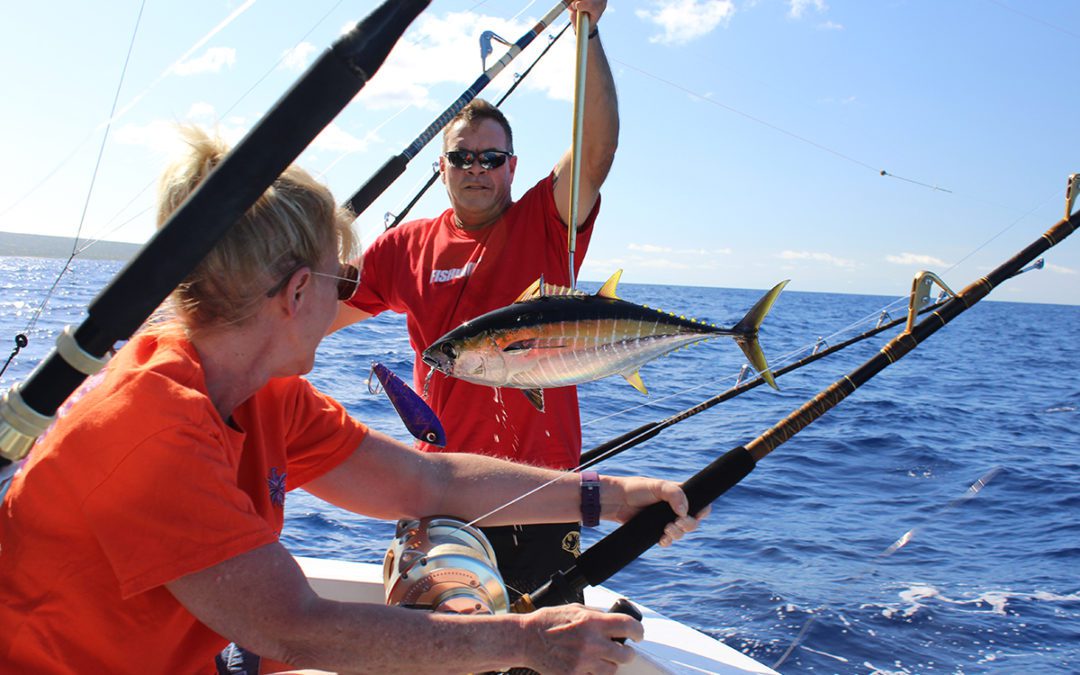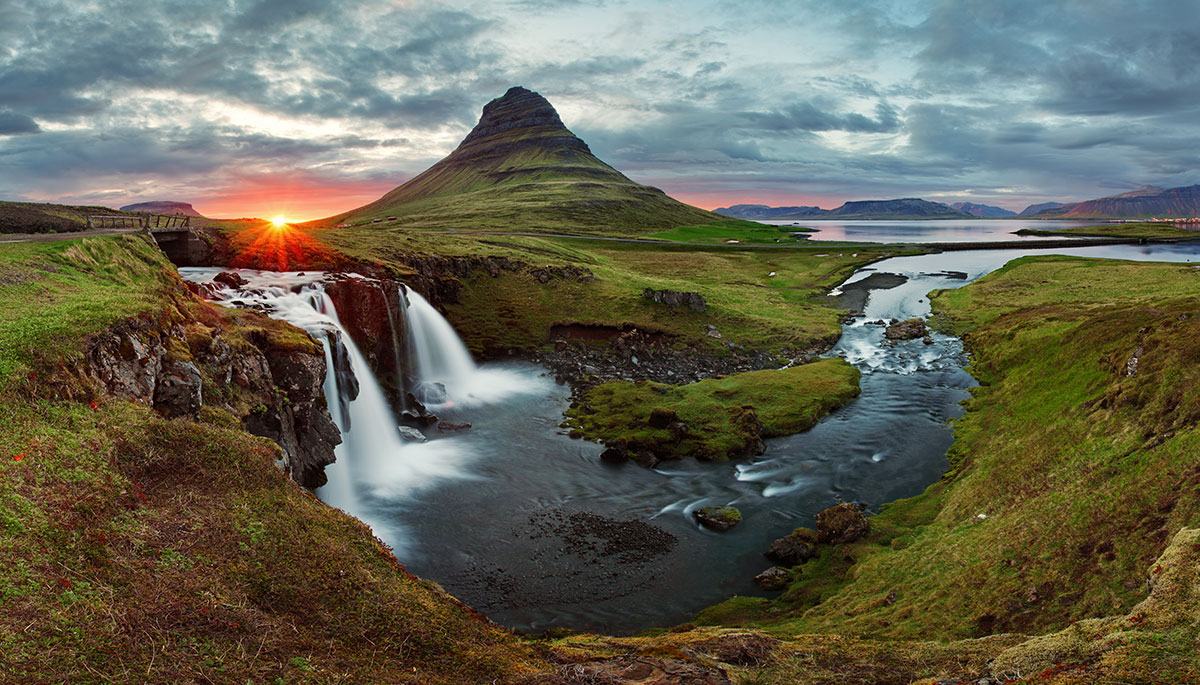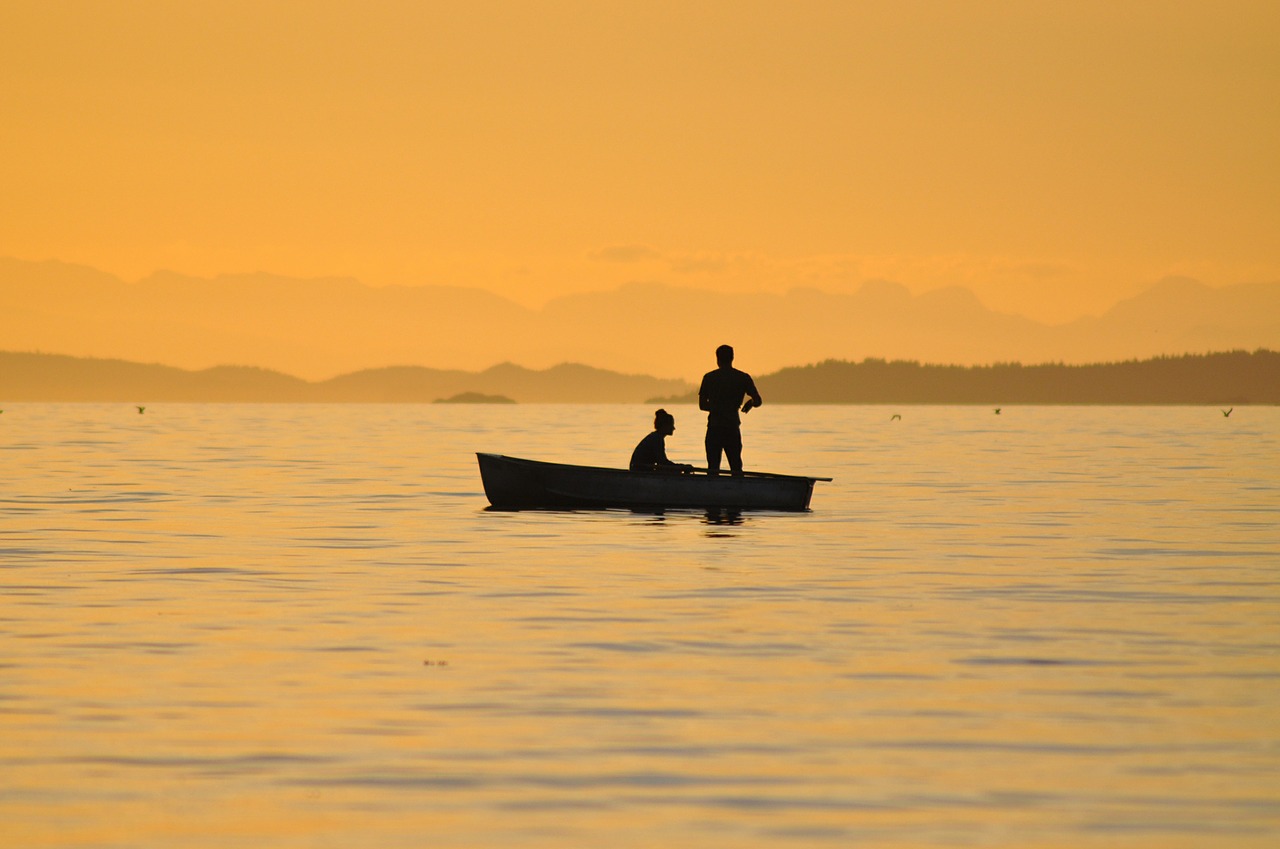In Maui, it’s not how many fish you catch, it’s how much tarragon is in the béarnaise sauce.
With its gorgeous beaches, lush mountain slopes, slumbering volcanoes, swaying palm trees, gyrating hula dancers, and colorful cocktails with little umbrellas, Hawaii lives up to its reputation as one of the world’s top vacation spots.
Wanting to add the 49th state to our bucket list, my wife, Kathy, and I boarded American Airlines in Charlotte this spring and took off for Phoenix. There we’d connect with another flight to Maui.
Everyone we talked to who’d previously visited Hawaii warned us that getting there and back was the only real downer. They spoke the truth.
Once we arrived at the Maui Kahului Airport and tracked down our rental car, we finally began to decompress. After a pleasant drive to the Maui Sheraton, we were ready to do the tourist thing.
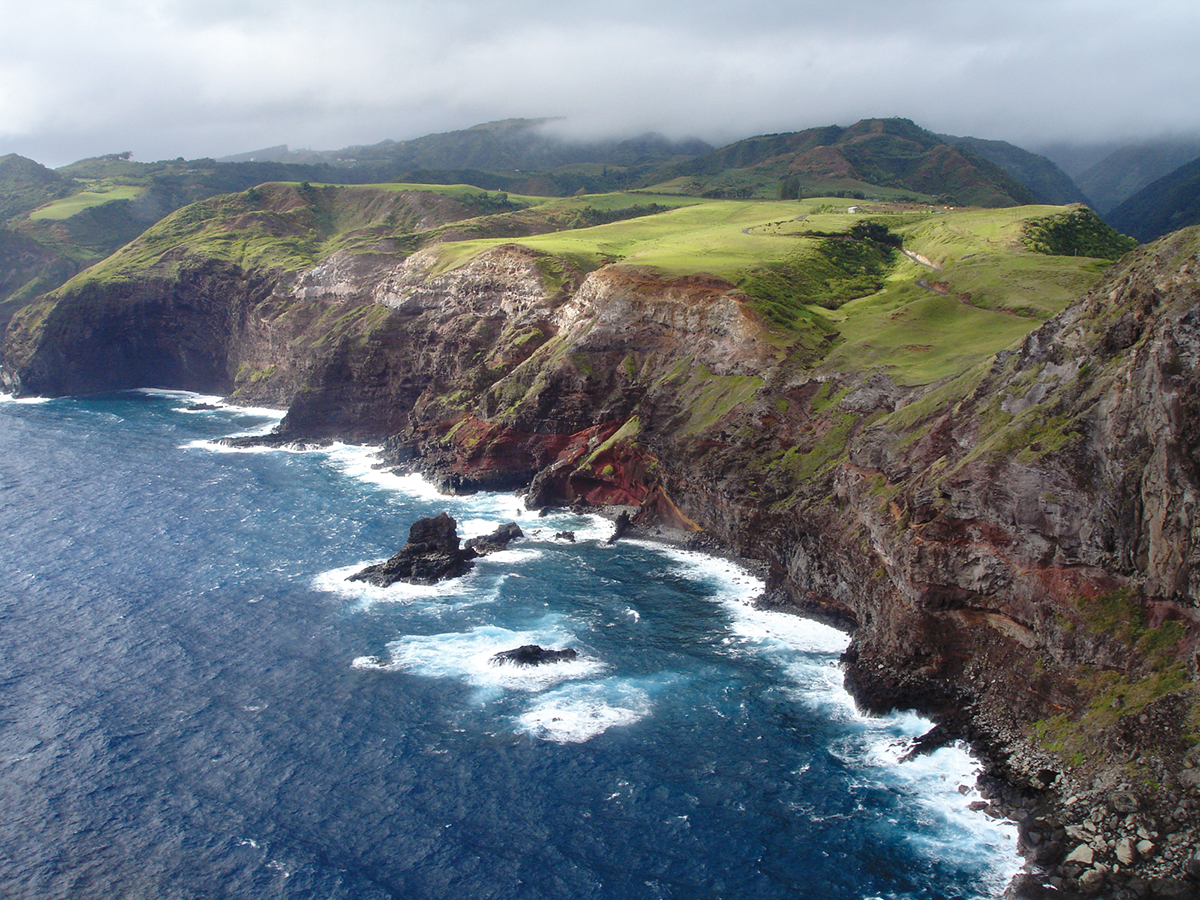
Maui’s rugged 120-mile coastline is characterized by heavily forested headlands, sheer cliffs and secluded bays.
Along with all the sunning, swimming, sightseeing, tropical dining and sipping exotic-looking drinks, we’d also included a six-hour fishing charter. I arranged it a few weeks before the trip, allowing time to do some fact-finding. After all, I knew almost nothing about fishing in Hawaii.
When I asked Lili at FishMaui, the booking company, what was biting, she couldn’t give me a solid answer.
“Mahi, ono, ahi, sailfish,” she said. “They’re out there, but what’s hitting on May 25 is anybody’s guess.
Like most saltwater fishing destinations, what’s biting can change with the tides. While billfish were just showing up—our boat had hauled in a 400-pound marlin the day before our trip—schools of ahi (yellowfin tuna) and ono (wahoo) were said to be fairly plentiful in the waters around the islands.
At 5 a.m. on our second morning there, we boarded the Hinetea at the Lahiana wharf, just a short drive from our hotel. We were greeted in the predawn darkness by Greg France, the skipper. He was in good spirits despite the fact that his first (and only) mate was AWOL. A few more folks from San Diego showed up, and soon we were all aboard and shoving off.
Greg let out six lines, including two outriggers, in the water before we cleared the harbor. The big Penn Internationals were stacked with hundreds of yards of heavy string, each pulling a fat, brightly skirted plug. The only exception was a six-inch purple lure that resembled a bass jig on steroids. Etched into its paint were toothmarks galore.
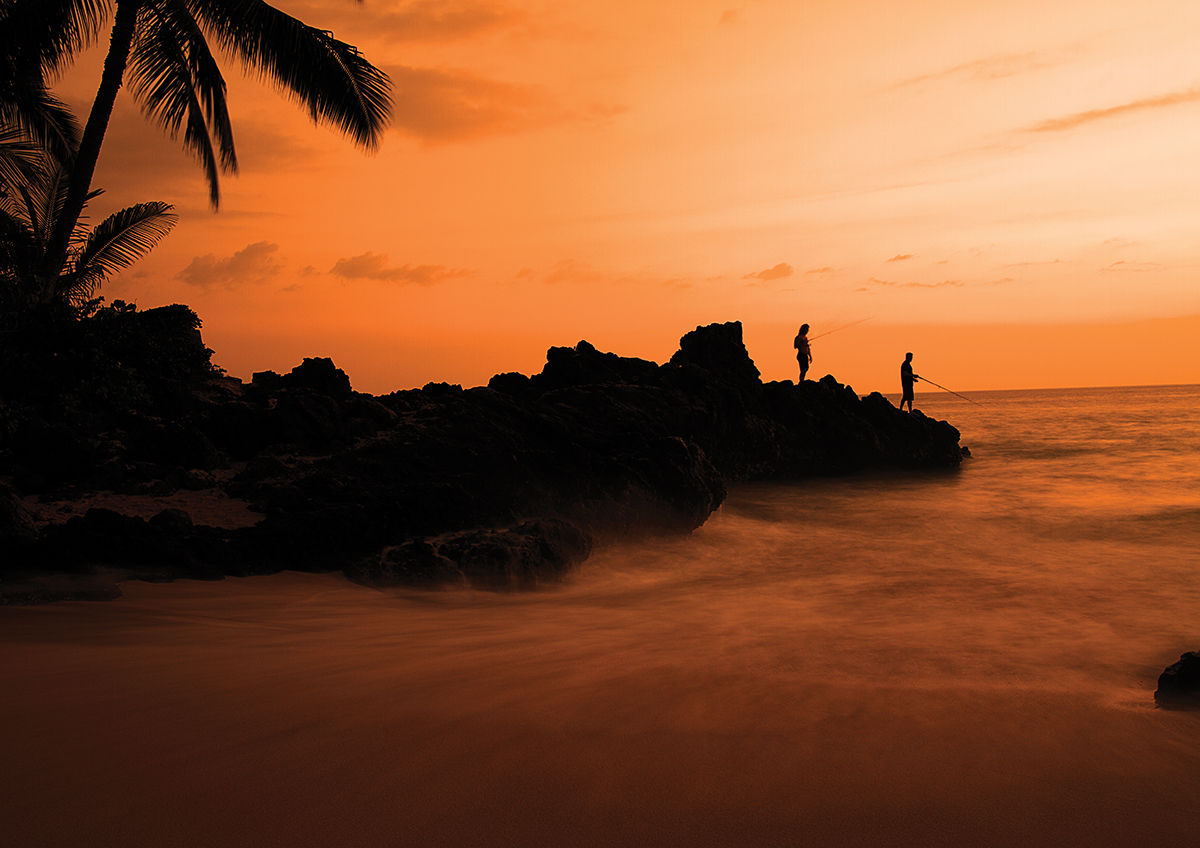
Fishing during Sunset in Maui, Hawaii.
“It doesn’t look like much,” Greg smiled before launching it, “but the thing catches fish.” We would soon learn that to be a fact.
Despite the no-show mate and some minor engine problems Greg had to deal with while trolling, he kept us on his planned course. It helped that one of the fishermen was willing and able to steer the 41-foot Hatteras across the unusually calm waters between Maui, Kahoolawe, and Lanai.
Back on the East Coast, blue-water trolling is typically done out of sight of land. Or maybe there’s a distant shoreline on the western horizon. But here, surrounded by mountainous islands, the views were tremendous. Watching the sun come up behind Maui and cast its rich morning light on the islands was a photographer’s dream. Add to that the purple and pink clouds that clung to the mountain peaks and catching fish really didn’t seem all that important.
Just kidding. I was all about ripping some Hawaiian fish lips, and despite the scenery, my eye rarely left the rod tips and outriggers.
It took a couple of hours to get a hit. But when you consider we began fishing within ten minutes of the dock, that’s not so bad. Back in the Carolinas, you could have a three-hour ride to reach a wreck or the Gulf Stream before you even wet a line.
At last the rumble of the twin diesels was broken by the whine of line ripping off a reel. Another angler, Brian, was closest to the fighting chair, and Greg shouted for him to grab the rod, sit down, and start reeling.
“Don’t give him any slack,” he shouted.
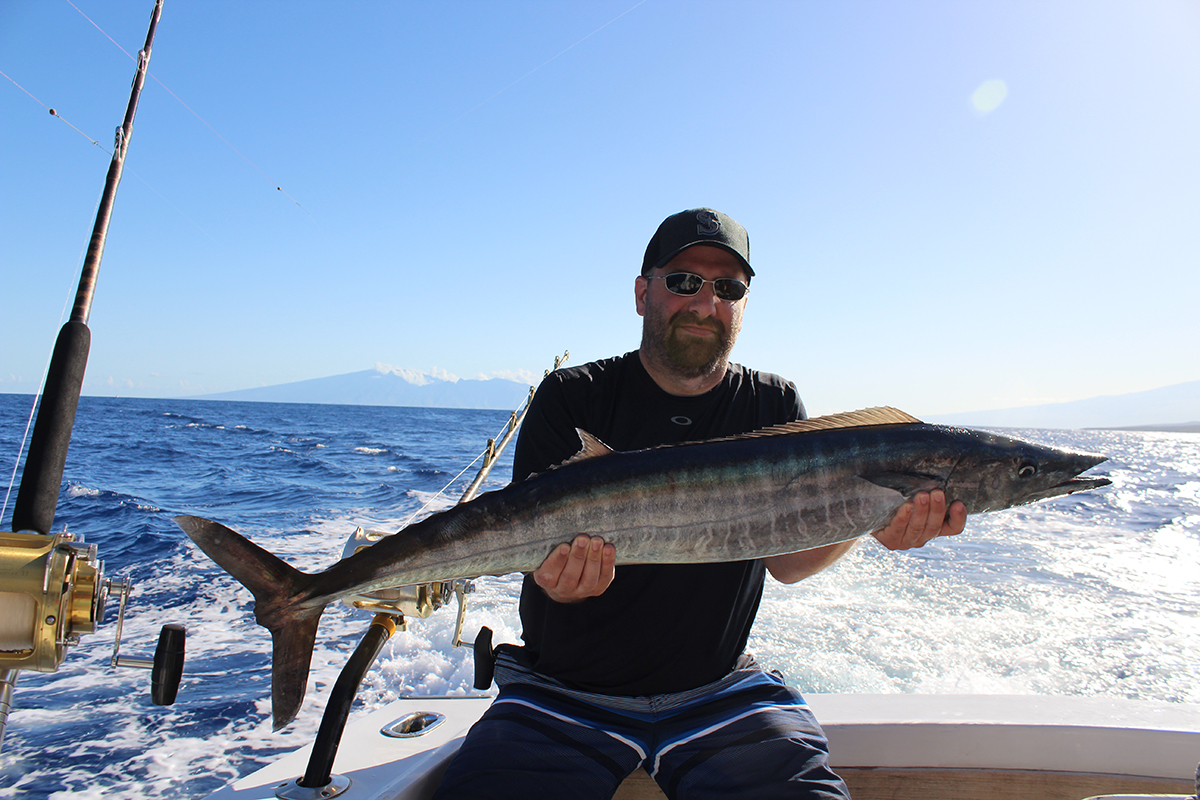
A few minutes later a nearly four-foot-long, 26-pound ono (wahoo) was gaffed and sent flopping on the deck. And guess what was dangling from its toothy mouth—yep, the unnamed purple thing, now sporting a new set of teethmarks.
The action was slow, but we were entertained by the beautiful weather, splendid scenery, good conversation, angler optimism, and the occasional fish. After another hour Kathy had a chance to grab a bent rod and settle into the fighting chair. It was a good tussle between the diminutive lady and a decent-sized tuna. Greg gaffed and hoisted it aboard. From its lip hung the ugly purple plug.
Around 11 a.m. we began trolling back toward the docks at Maui. Greg filleted the fish, and with the assurance that a number of restaurants would gladly prepare it for us, we took a hefty quantity of both ahi and ono.
Later, after getting back to the hotel and putting the fillets on ice, we cleaned up and headed to CJ’s Deli & Diner. We’d dined there the night before, having heard about their diverse menu and great prices. (Hawaii is expensive—really expensive). When we asked Chef Jason if he could cook up our fillets for dinner, he smiled.
“Sure, but not tonight. Leave them with me and come back tomorrow. I want to do some marinating and plan the dishes.”
Next evening we arrived at CJ’s and were led to a cozy corner table with cloth and candles. Definitely out of the ordinary considering CJ’s is a simple deli that doesn’t even sell alcohol. But you can bring your own wine, which we did.
After a fresh salad for starters came a platter of superb ono tacos with homemade guacamole. Next, we were served ono fish and chips, which were awesome.
We took a little wine break before the ahi sashimi arrived. This is absolutely the best way to serve just-caught tuna. For our final course, we enjoyed ahi cooked in a light crab macadamia crust with béarnaise sauce and pineapple fried rice.
We paid some hefty dinner bills at other spots around the island, but none compared to this five-course dinner, which ran about 50 bucks. Eating your own freshly caught fish no doubt adds to the appeal.
In conclusion, be sure to eat at CJ’s at least once when you’re in Maui. You don’t have to provide the fish, but you do need to bring your own wine. You can buy a bottle at the Safeway down the street.
Aloha!
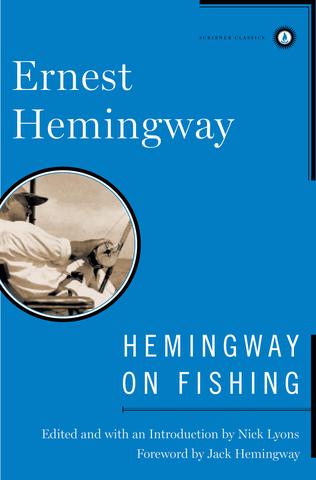
Hemingway on Fishing is an encompassing, diverse, and fascinating assemblage. From the early Nick Adams stories and the memorable chapters on fishing the Irati River in The Sun Also Rises to such late novels as Islands in the Stream, this collection traces the evolution of a great writer’s passion, the range of his interests, and the sure use he made of fishing, transforming it into the stuff of great literature.
From childhood on, Ernest Hemingway was a passionate fisherman. He fished the lakes and creeks near the family’s summer home at Walloon Lake, Michigan, and his first stories and pieces of journalism were often about his favorite sport. Here, collected for the first time in one volume, are all of his great writings about the many kinds of fishing he did—from angling for trout in the rivers of northern Michigan to fishing for marlin in the Gulf Stream.
In A Moveable Feast, Hemingway speaks of sitting in a café in Paris and writing about what he knew best—and when it came time to stop, he “did not want to leave the river.” The story was the unforgettable classic “Big Two-Hearted River,” and from its first words we do not want to leave the river either. He also wrote articles for The Toronto Star on fishing in Canada and Europe and, later, articles for Esquire about his growing passion for big-game fishing. Two of his last books, The Old Man and the Sea and Islands in the Stream, celebrate his vast knowledge of the ocean and his affection for its great denizens.
Anglers and lovers of great writing alike will welcome this important collection. Buy Now

